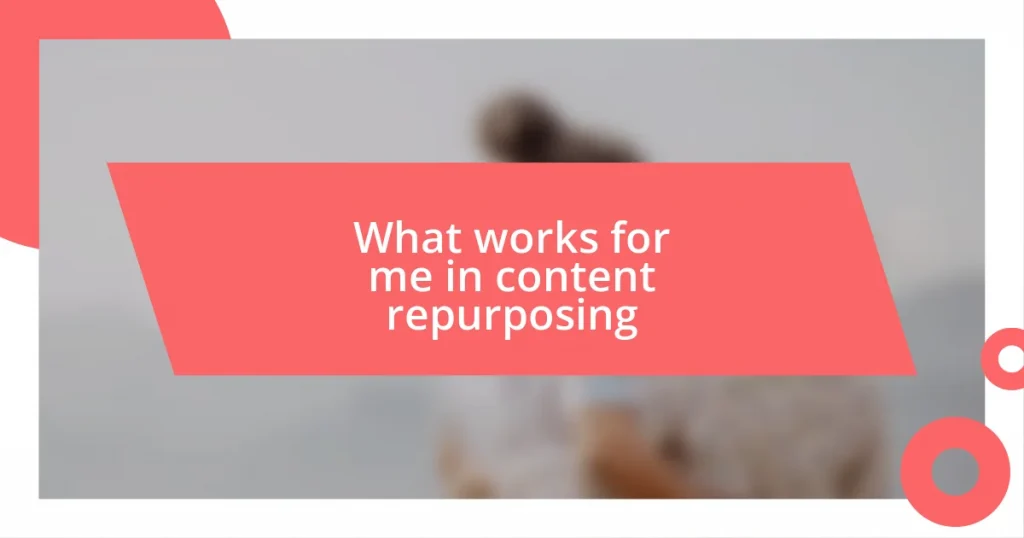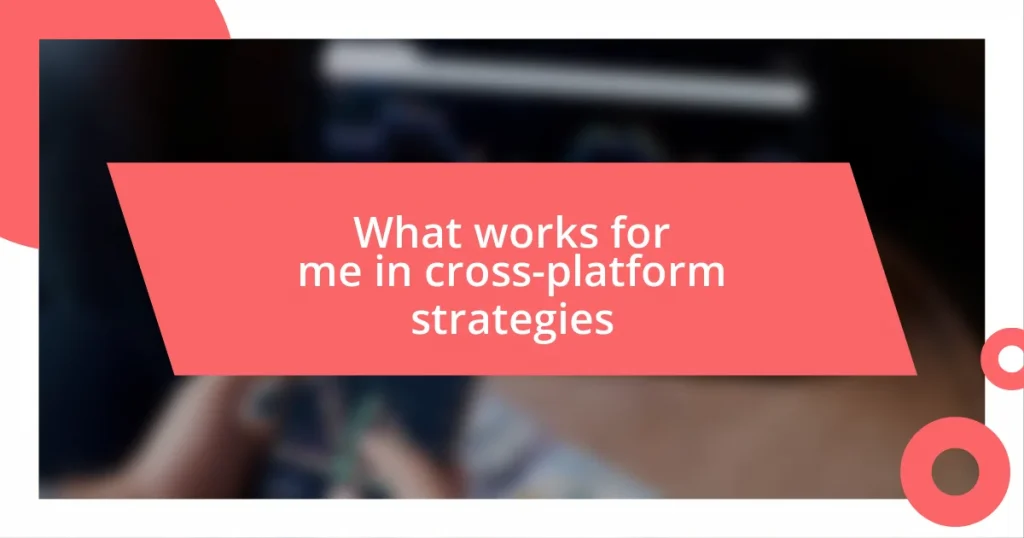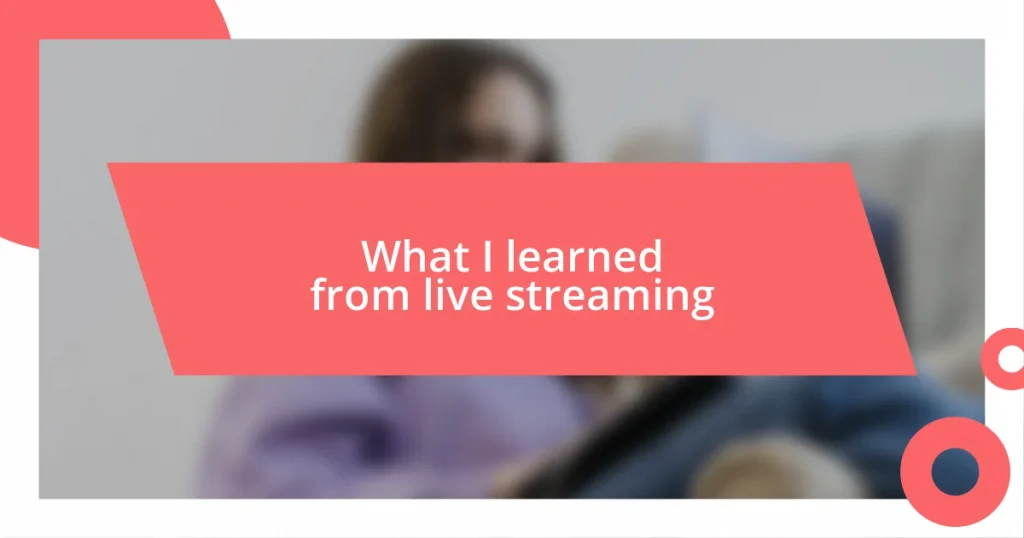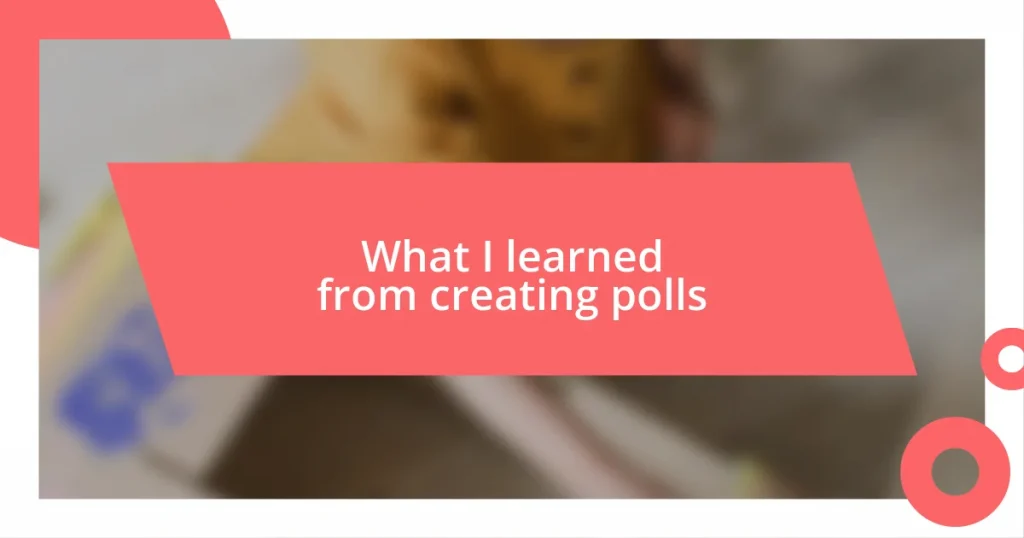Key takeaways:
- Content repurposing enhances reach, saves time, and boosts SEO by transforming existing materials into various formats.
- Identifying suitable content for repurposing involves analyzing engagement metrics, popular posts, and timeless topics to breathe new life into older materials.
- Consistency, updating old content, and using a content calendar are essential best practices for successful long-term content repurposing.
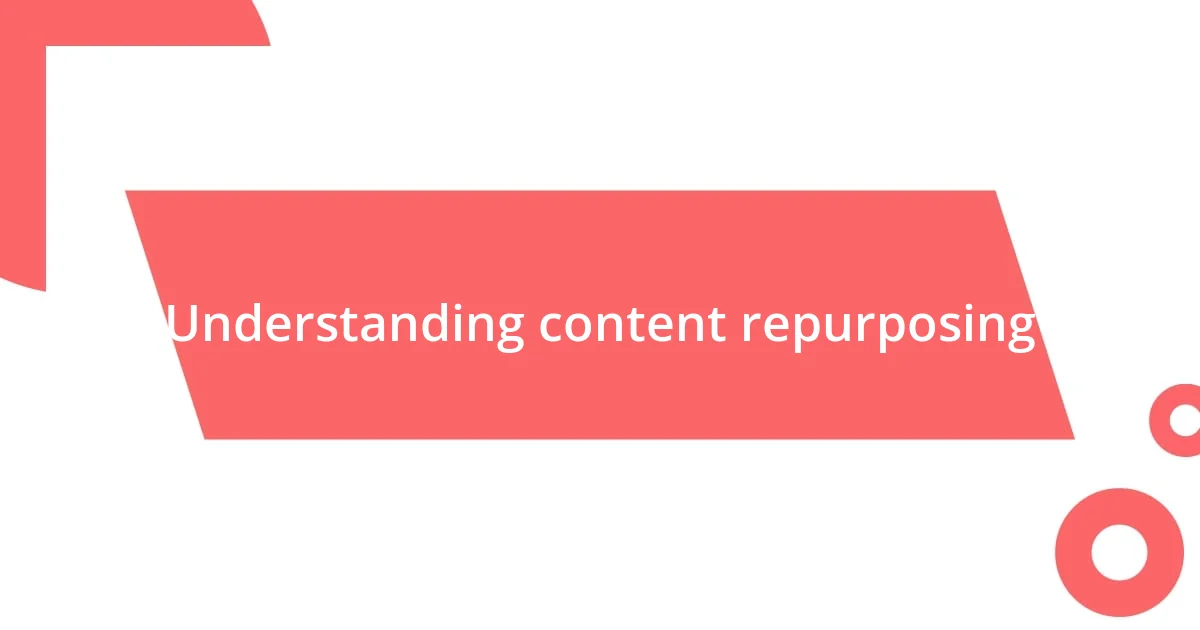
Understanding content repurposing
Content repurposing is about taking existing materials and transforming them into new formats or perspectives to reach a wider audience. I’ve often found that this not only saves time but also allows me to present my ideas in fresh, engaging ways. For instance, I once turned a series of blog posts into a podcast, which opened up conversations I hadn’t anticipated.
Understanding the essence of content repurposing comes down to recognizing the potential in what you’ve already created. I remember the first time I discovered this concept; I felt like I had struck gold! It struck me that each piece of content has multiple lives, waiting for me to uncover them. Wouldn’t it be amazing if more creators realized the value in rethinking their existing work rather than constantly starting from scratch?
In practical terms, repurposing can be as simple as transforming an infographic into a video or breaking down a comprehensive eBook into a series of tweets. The emotional payoff is profound; when I see my core ideas resonating in different formats, it truly validates my creativity and efforts. What strategies do you think could work best for you in breathing new life into your content?
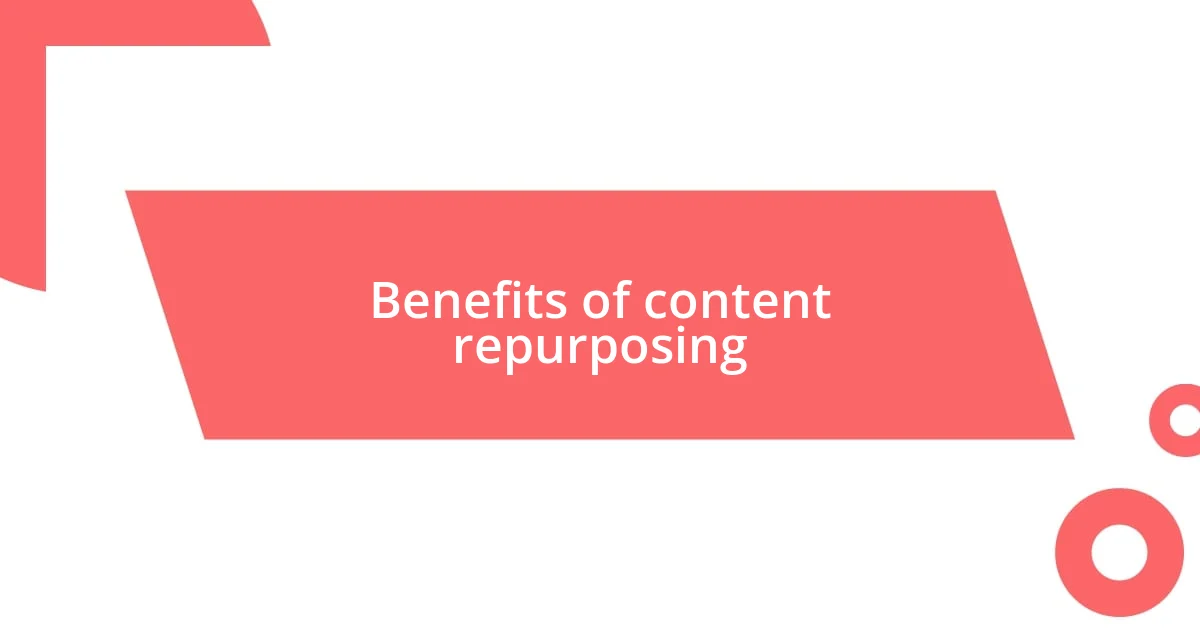
Benefits of content repurposing
Content repurposing brings a multitude of advantages, especially in enhancing reach and engagement. I’ve often noticed that by turning a single blog post into several social media snippets, I can connect with different segments of my audience in various ways. This approach not only amplifies my message but also allows for a richer dialogue around the topics I care about.
Another significant benefit is time efficiency. Reworking previously created content is a smart way to maximize what I’ve already invested in research and writing. For example, I once recorded a webinar and later distilled it into a downloadable guide. This means I don’t always have to reinvent the wheel, leading to a more productive workflow that fuels my creativity.
Additionally, repurposing content boosts SEO value. Each new format creates another opportunity for search engine visibility. I’ve seen how transforming a popular article into an engaging video can attract new traffic, creating a ripple effect of increased interest across my platforms. It’s rewarding to witness how a single idea expands into various forms and further influences my audience.
| Benefit | Description |
|---|---|
| Wider Reach | Repurposing allows you to engage diverse audiences across different platforms. |
| Time Efficiency | It maximizes existing content, saving the time of creating new material from scratch. |
| Enhanced SEO | More formats mean more opportunities for search visibility and traffic. |
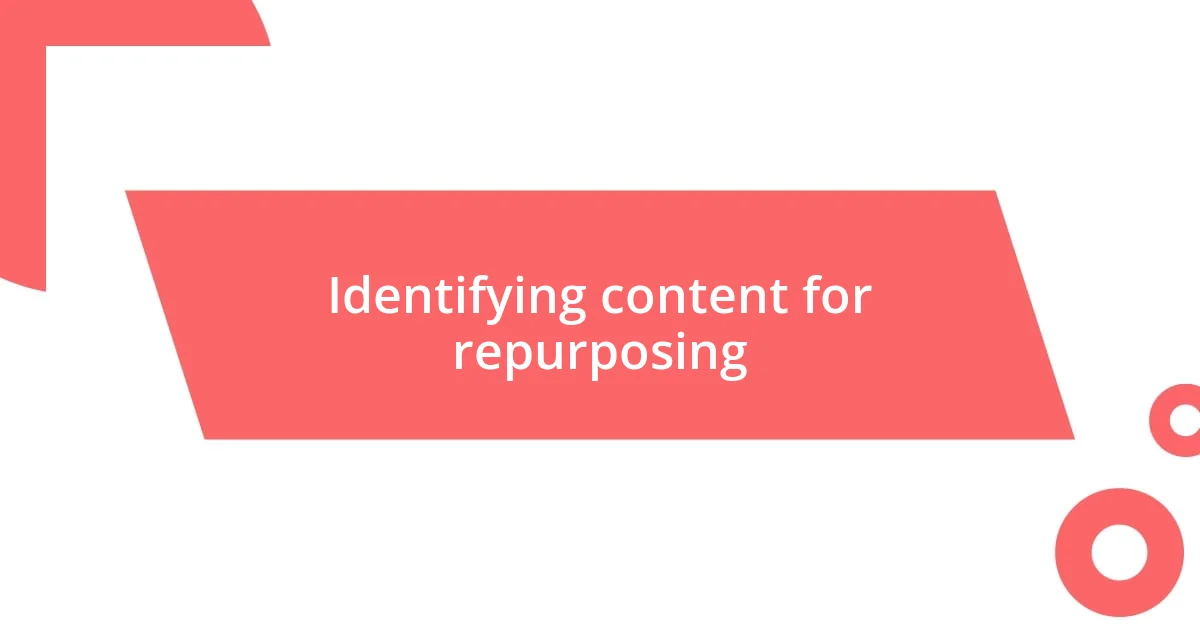
Identifying content for repurposing
Identifying content suitable for repurposing is an art form that requires a keen eye for potential. I often sift through old blog posts and social media updates, searching for gems that can be reshaped. It’s like treasure hunting; the excitement builds when I uncover a piece that can breathe new life into my current projects. For me, the key is to look for content that sparked interest or discussion previously. If it resonated then, there’s a strong chance it can engage a different audience now.
Here’s a practical approach I use to pinpoint great candidates for repurposing:
- Popular Posts: Look at which of your content received the most engagement, insights, or shares.
- Data and Reports: If you’ve created comprehensive research papers, think about summarizing the findings in a more digestible format, such as an infographic or video.
- FAQs: Break down frequently asked questions into bite-sized, shareable content like social media posts or short videos.
- Evergreen Content: Identify timeless topics that can be revisited and discussed anew.
- Customer Insights: Repurpose testimonials or case studies into compelling stories that can enhance your narrative across different formats.
By employing this method, I’ve transformed a once overlooked webinar into a series of engaging blog posts, each gradually pulling apart the main ideas and expanding conversations around them. The joy I felt when I watched how those posts resonated with readers freshened my perspective on the original content. It’s moments like these that fuel my passion for content creation and repurposing!
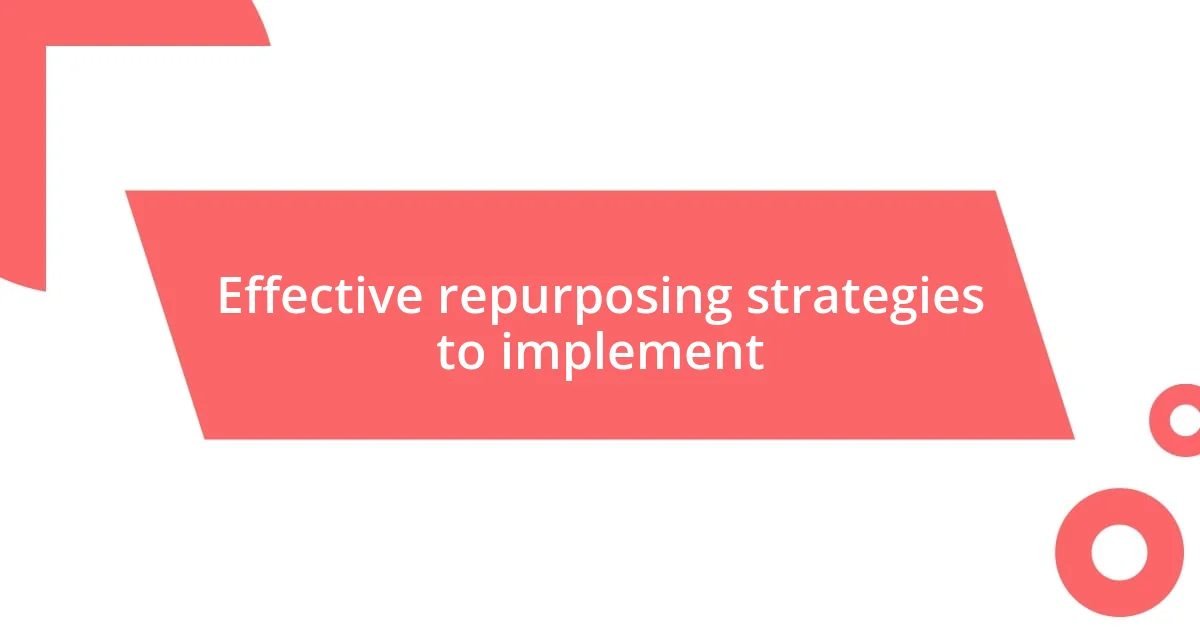
Effective repurposing strategies to implement
One strategy I’ve found incredibly effective is transforming a single piece of content into a multi-part series. For example, after writing a comprehensive guide on digital marketing strategies, I broke it down into shorter, topic-specific articles. Each one tackled a unique angle, and as I watched readers engage in the comments, I felt a sense of accomplishment. Have you ever dissected your own content this way? It’s not just about repurposing; it’s about reigniting conversations and ideas that may have been overlooked.
Another approach involves selecting key quotes or insights from existing content to create eye-catching graphics for social media. Recently, I pulled quotes from my guest blog posts, paired them with vibrant visuals, and shared them across my platforms. The response was enlightening; followers engaged not just with the quotes, but with the original articles I linked back to. I can’t help but wonder—are you capitalizing on those little nuggets of wisdom in your own work? This not only reinforces your message but also creates new touchpoints for your audience.
Lastly, I often repurpose video content into blog posts. After hosting a live Q&A session, I transcribed the conversation and shaped it into a post highlighting the most valuable insights shared. This not only extended the life of the video but also allowed me to reach readers who prefer text over video. Think about your own multimedia content: how often do you revisit it to extract fresh ideas? For me, this strategy not only broadens my audience but also deepens engagement—something I hold in high regard.
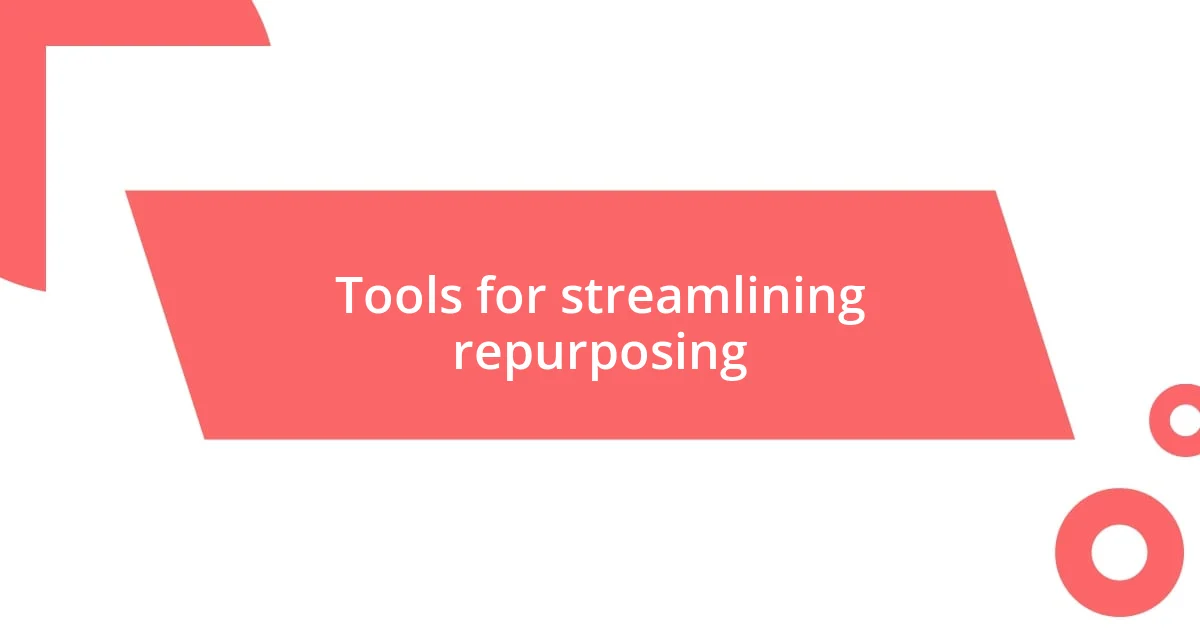
Tools for streamlining repurposing
To streamline the repurposing process, I’ve found several tools to be invaluable. For instance, I use tools like Trello and Asana to organize and track my content ideas. This way, I can visualize which pieces are ripe for transformation and monitor their progress. When I first started using Trello, it felt like a game-changer; I could see everything in one place and felt a rush of clarity as I moved cards from one column to another. Have you ever experienced that satisfying feeling of checking off a task?
Another tool that has made a significant impact on my repurposing efforts is Canva. I love creating engaging visuals effortlessly. For instance, when I repurposed a series of blog posts into infographics, I was amazed at how much traffic they attracted. The instant feedback from followers was a delightful surprise. I often think about whether my audience processes information differently; visuals tend to resonate better with some people, don’t you agree? Canva has made that a breeze for me.
Lastly, using social media scheduling tools like Buffer or Hootsuite has helped me amplify my repurposed content effectively. With these platforms, I can plan a month’s worth of posts in one sitting. The first time I did this, it felt as though I had taken control of my schedule. I wondered why I hadn’t been doing it sooner! It allows me to consistently share repurposed content without feeling overwhelmed on a daily basis. What about you? Have you found a system that gives you a sense of freedom in your content strategy?
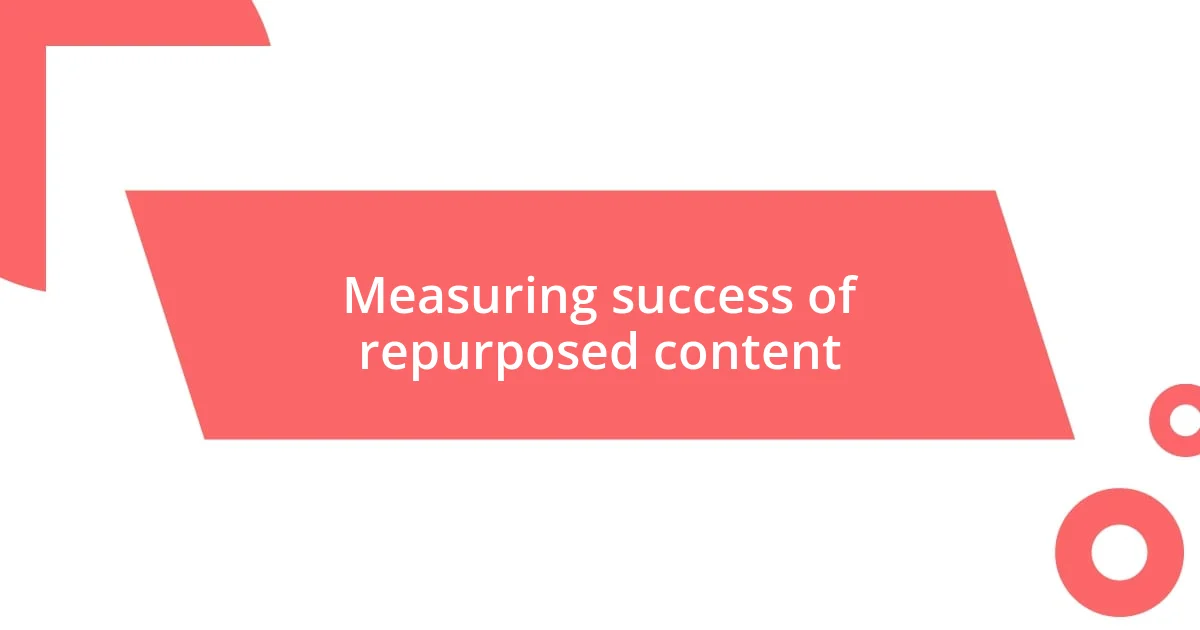
Measuring success of repurposed content
When it comes to measuring the success of repurposed content, I’ve learned that analytics play a crucial role. For instance, after converting a blog post into a podcast episode, I closely monitored the download numbers and listener feedback. Seeing the statistics spike felt rewarding, as it confirmed that my content was resonating with a different audience. Have you ever tracked how your repurposed content performs compared to the original?
Engagement metrics are also vital in understanding impact. I often assess comments, shares, and overall interaction rates on social media when I share visuals derived from existing blog posts. There was a time when a particularly eye-catching graphic led to a flood of comments that revived an old discussion topic, which surprised me. It made me wonder—are you also tapping into the potential for deeper conversations through your designs?
Lastly, I’ve started evaluating the longevity of repurposed content. Tracking how long the traffic flow continues after sharing a repurposed piece is enlightening. For example, a video turned blog post continued attracting visitors weeks later, confirming that some formats have lasting power. I can’t help but ask—how are you measuring the lasting impact of your repurposed content? Understanding these metrics truly transforms the way I approach my content strategy, allowing me to focus on what truly works.
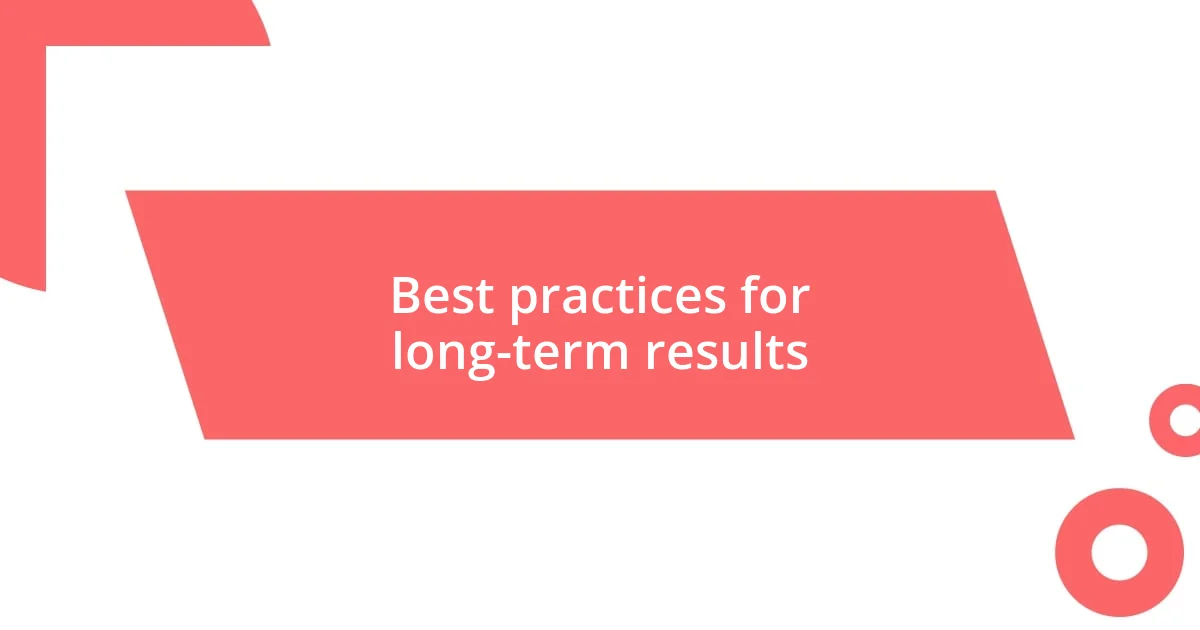
Best practices for long-term results
I’ve found that consistency is key for long-term success in content repurposing. When I started regularly sharing my repurposed content, I realized that repetition helped reinforce my messages. For instance, I’ve noticed how sharing the same infographic across different platforms at spaced intervals created a steady flow of engagement. Have you ever tried to establish a rhythm with your content? It’s fascinating to see how the audience gradually catches on over time.
An important practice I swear by is updating old content before repurposing it. Recently, I revisited an old blog post that hadn’t gotten much traction initially, and after refreshing the data and examples, I turned it into a series of social media posts. The reactions were incredible; I felt a reawakening of energy around something I thought was lost. Isn’t it amazing how a little update can breathe new life into your work?
Lastly, creating a content calendar has significantly impacted my long-term results. By planning out my repurposed content well in advance, I’ve been able to align my themes and messages with seasonal trends. I still remember the first time I mapped out my content for three months ahead—it felt daunting yet exhilarating. The organization it brought to my planning process opened a world of strategic possibilities. I often wonder—how often do you revisit your overall strategy for content like this? It’s truly a game-changer.










